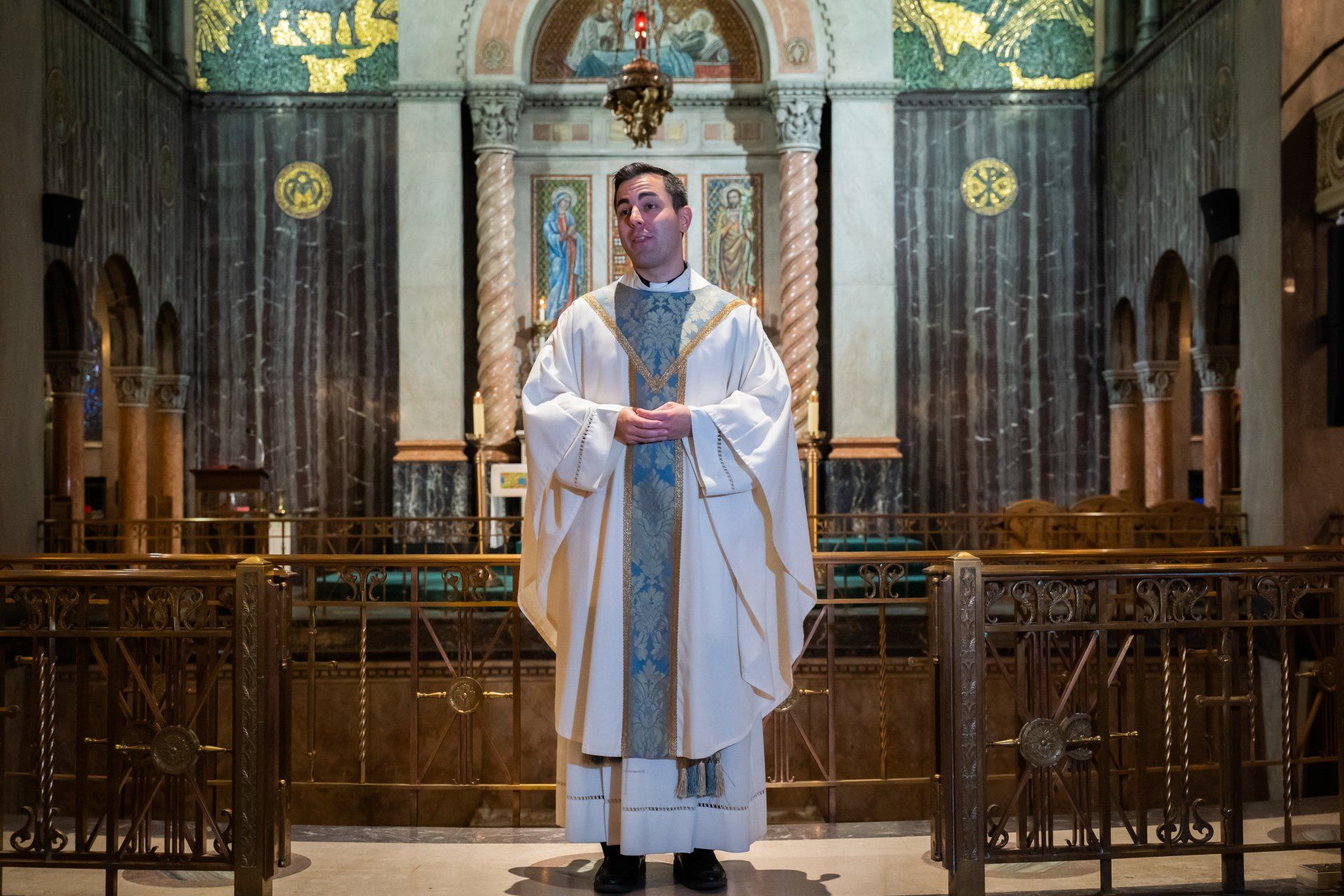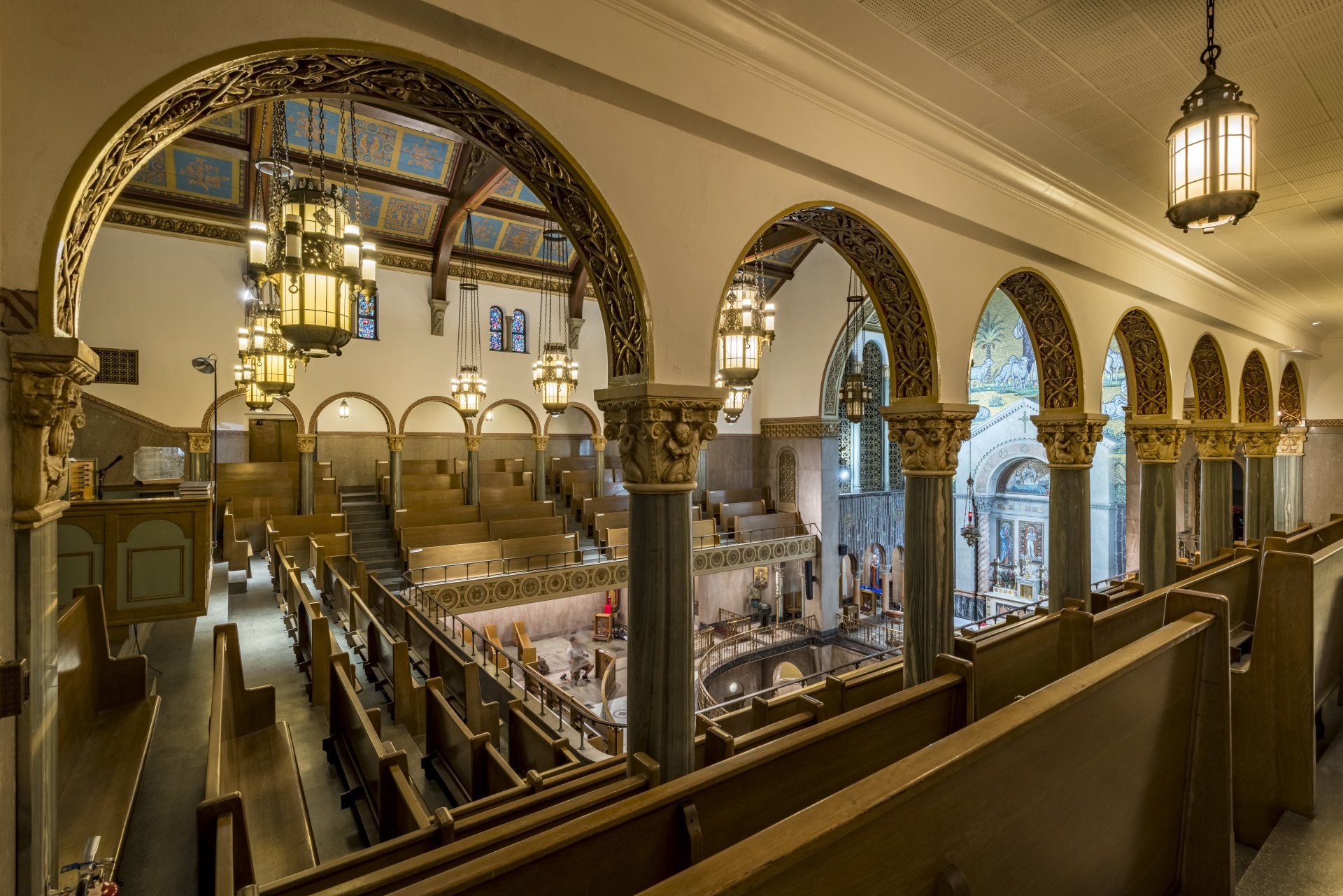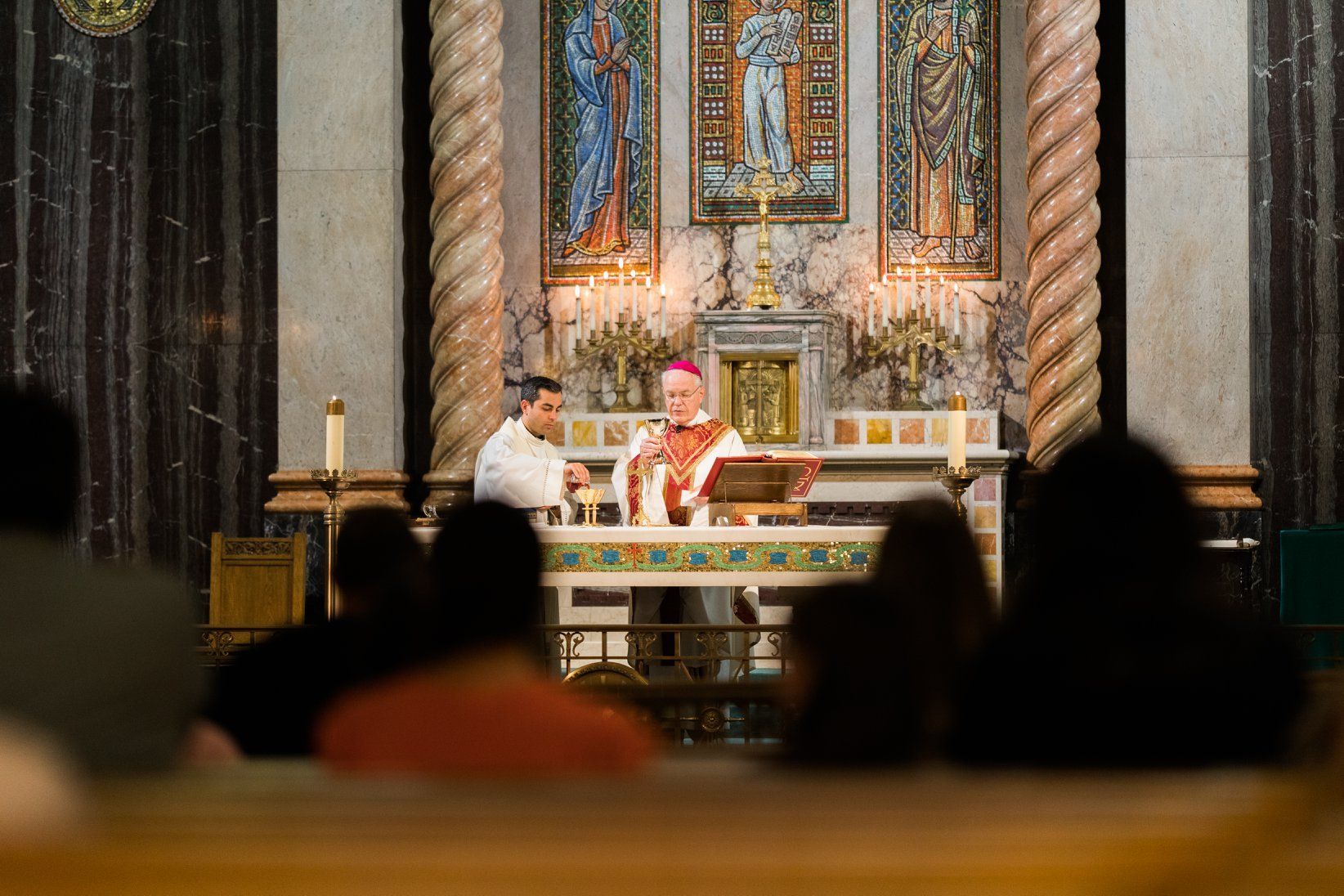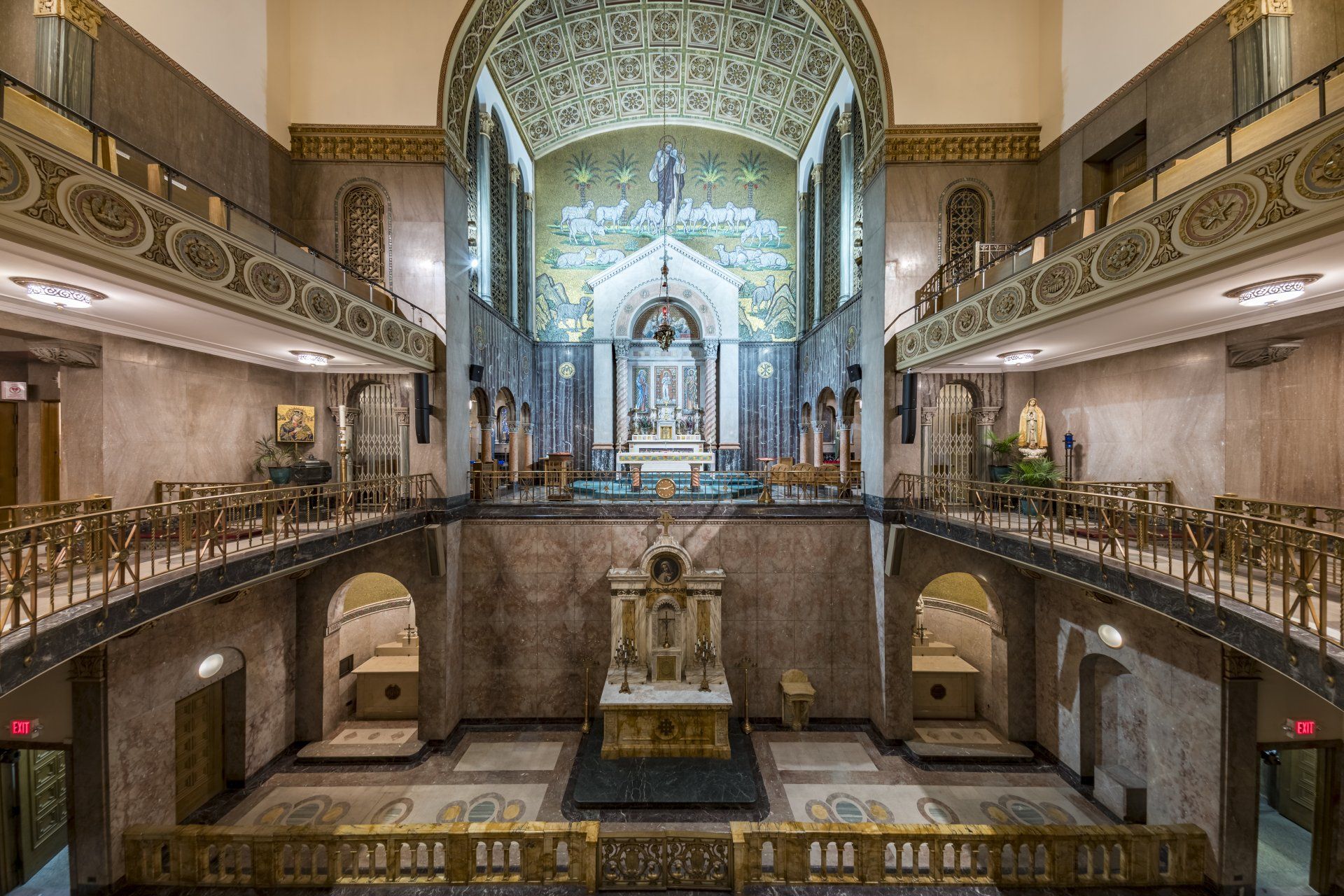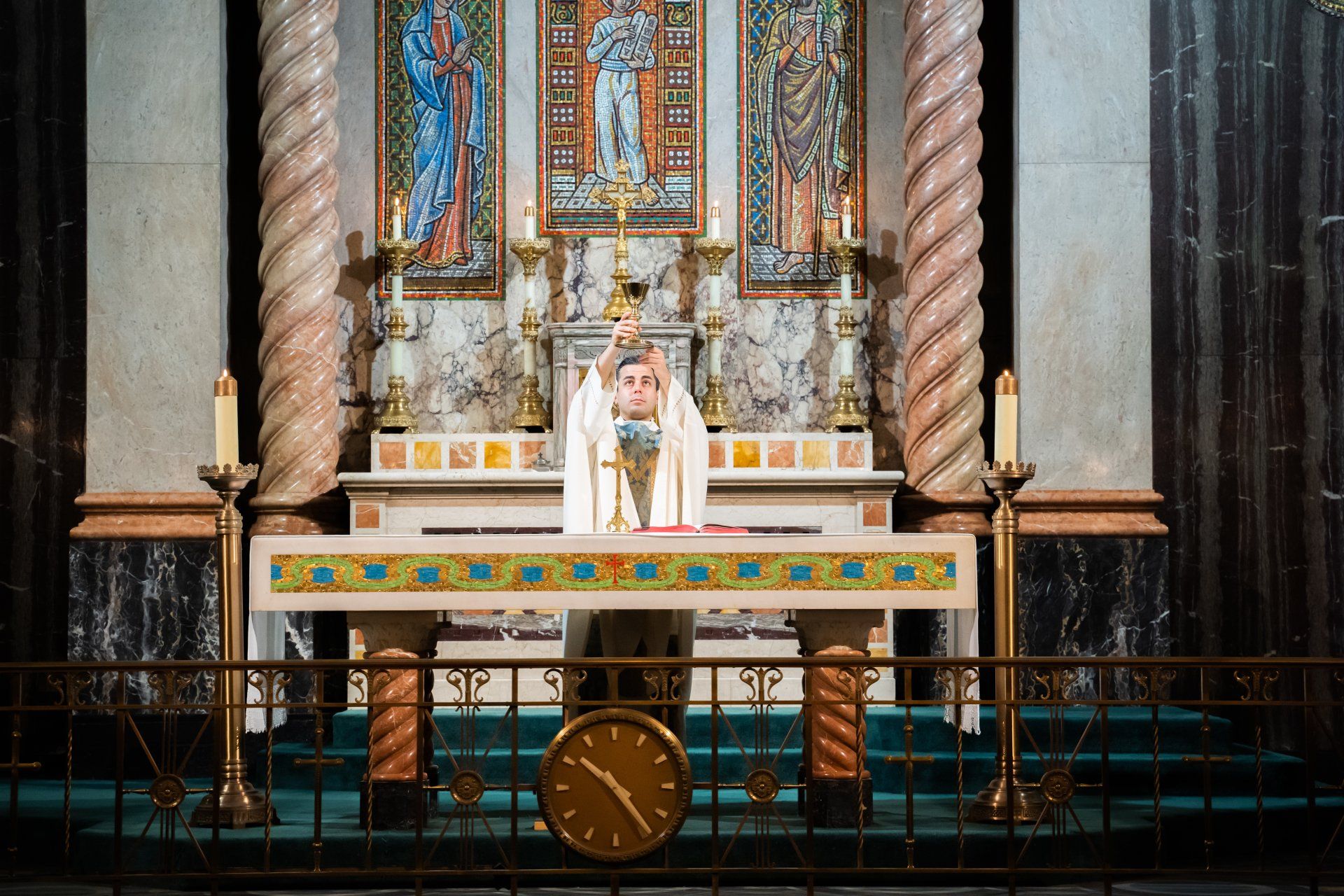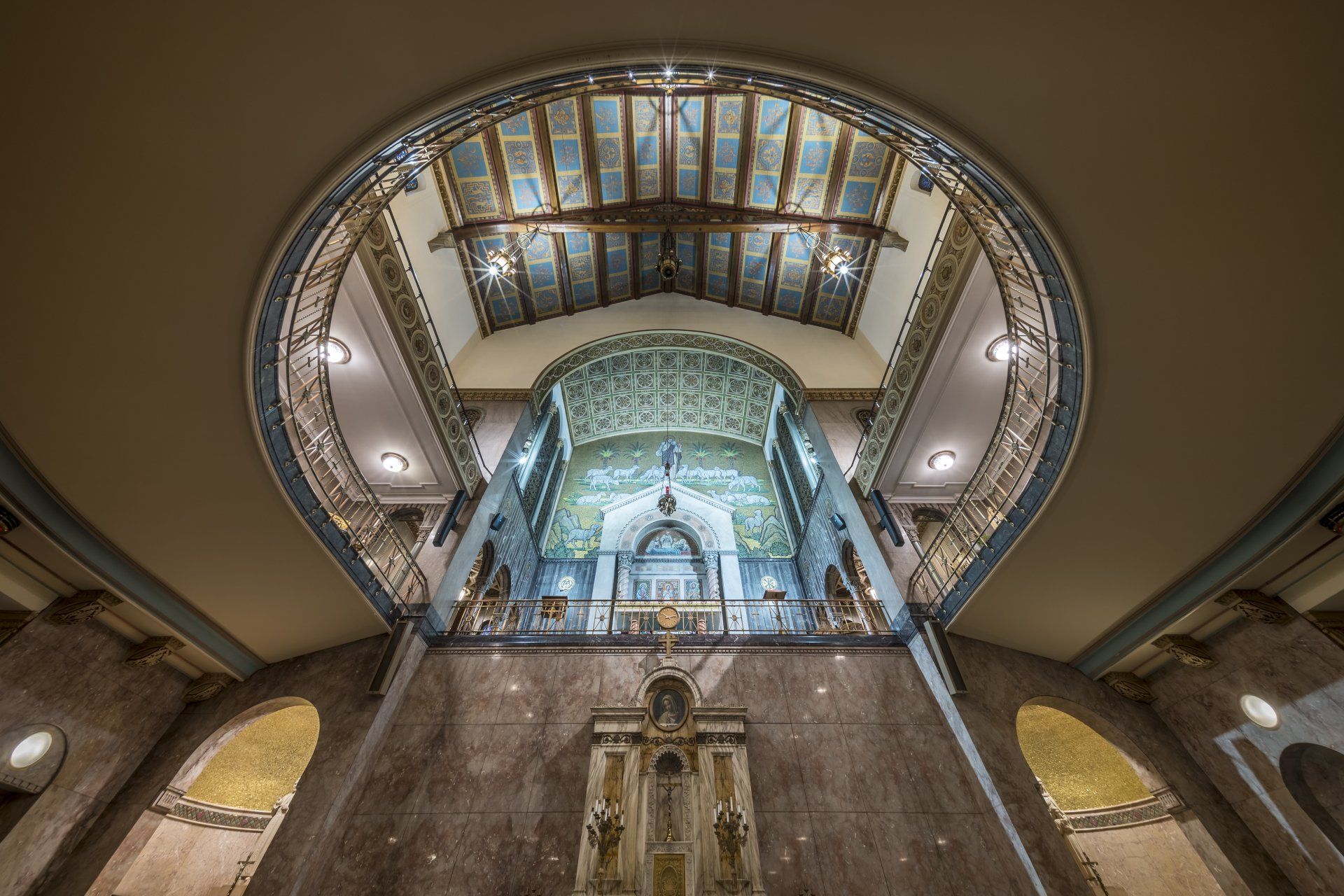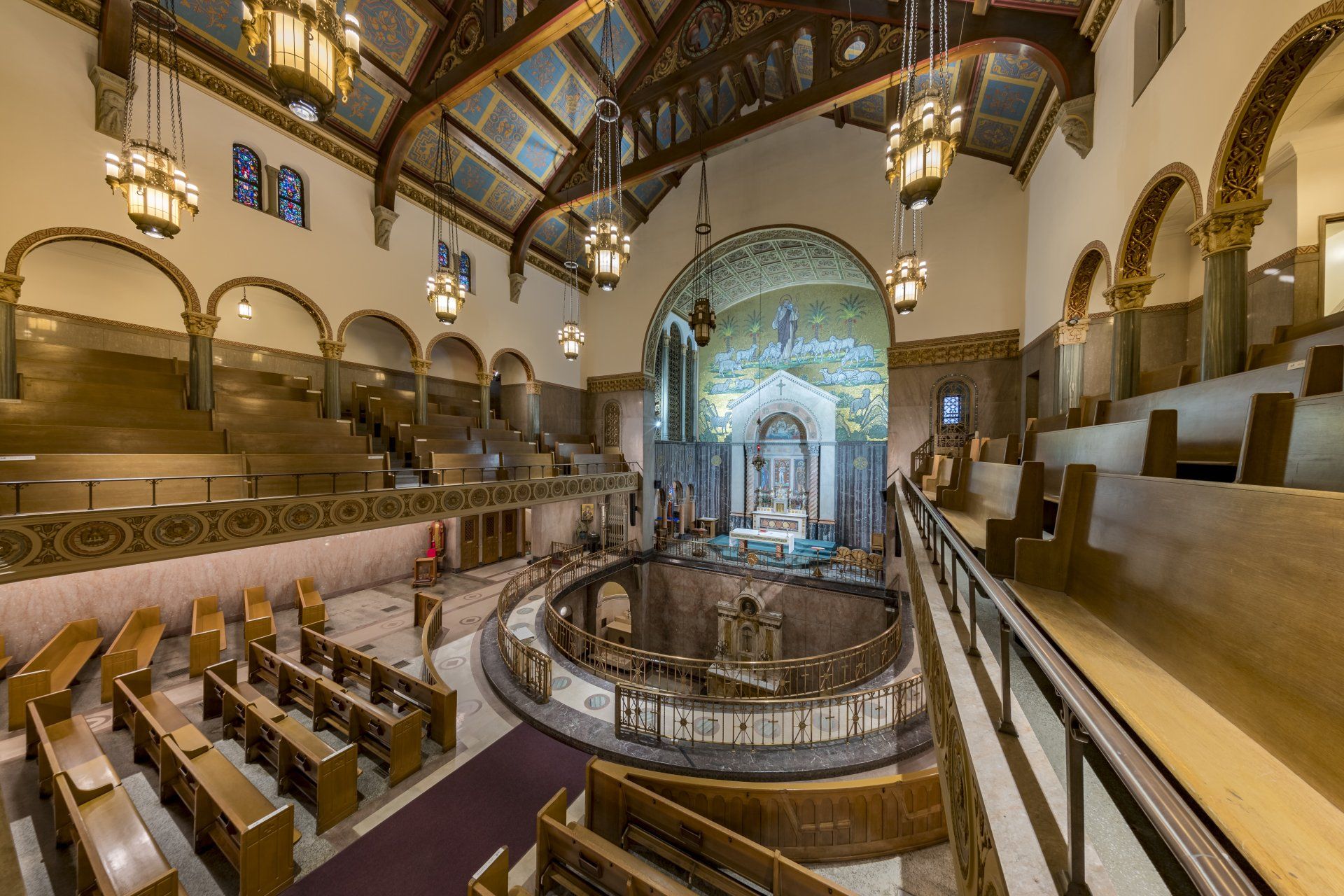About us
Parish History
Everybody’s Church in Downtown Detroit.
Whether you call downtown Detroit your home, or you’re a visitor to our growing city, we welcome you to our parish. Since 1873, we have served the people of our community in all walks of life, from the homeless to the wealthy, those living downtown or in the suburbs.
Our Parish
Since our founding in 1873, St. Aloysius Catholic Church has been home to parishioners of all walks of life, from the homeless to the wealthy, and to those living downtown or in the suburbs. Our community is diverse, and our city is growing: we want you to know that if you’re not a part of our community yet, we welcome you and hope you find a home here. St. Aloysius is a place for you to encounter Christ, grow in relationship with Him and with others, and to join us in becoming the hands and feet of Christ to the community around us.
Before it became a Catholic parish, St. Aloysius was dedicated as a Presbyterian church in 1861. It was later purchased by the Bishop of Detroit, and held its first Catholic service August 24th, 1873. Our church stood before the first street railway was built, before the first public library opened, and even before the first telephone was installed in the city. From its founding, St. Aloysius drew Catholics from all over Detroit. In April of 1930, the church was razed to make way for its present magnificent structure, which stands as a modern-day monument to the history of Catholicism in Detroit.
About our Patron
St. Aloysius Gonzaga was born the oldest of seven children to aristocrats in Northern Italy in 1568. His father was a Marquis and his mother was a lady-in-waiting to Isabel, the wife of King Phillip II of Spain. As the eldest son of a marquis, his father expected him to become a soldier, which was the norm for the class at that time.
At the age of 8, he was sent to serve at the court of the Grand Duke Francesco I de’ Medici and to continue his education. While there, he fell ill, and during that time, he read about the saints and spent much time in prayer. It is said that he took a private vow of chastity at the young age of 9.
Several years later, he returned to his hometown of Castiglione and met Cardinal Charles Borromeo, whom he received his First Communion from in 1580. After reading books about the lives of the Jesuits, he felt that he was called to join and become a missionary. He adopted an ascetic lifestyle and began teaching catechism classes to other boys in the summers.
Years later, Aloysius revealed to his family that he wished to join the Jesuit order and become a missionary, but they tried to persuade him against it. When they saw that he would not change his mind, they tried suggesting that he become a secular priest instead, so as to not give up his inheritance or status. But he would not be moved — he would join the Jesuits.
In 1585, Aloysius legally gave up the rights to his inheritance and was accepted into the novitiate of the Society of Jesus. Since his illness in childhood, he suffered chronic health problems including kidney disease, skin disorders, chronic headaches, and insomnia.
In November of 1587, he took vows of chastity, poverty and obedience, and in 1588, he received minor orders and began studying theology to prepare for ordination. Later in 1591, a plague broke out in Rome, and as the Jesuits opened a hospital for the ill, Aloysius decided to volunteer. He washed and fed victims and carried them in from the streets to the hospital. Though many of the younger Jesuits fell ill and Aloysius was forbidden from returning to the hospital, he requested permission, which was granted.
In March of 1591, around his 23rd birthday, Aloysius caught the plague and became ill himself. For several weeks, he battled fever and a cough, and he revealed to his confessor that he knew he would die within the octave of Corpus Christi. On June 21, he told others he would pass before the day was over and received last rites. He died just before midnight.
Many considered him to be a saint after his death and was beatified just 14 years later by Pope Paul V. He was canonized in 1726 by Pope Benedict XIII. In 1729, he was declared patron saint of the youth, and is also considered the patron of plague victims, AIDS sufferers, and their caregivers. His feast is June 21, the day of his death.
